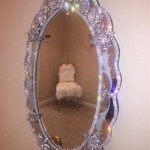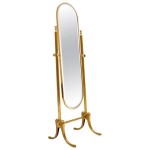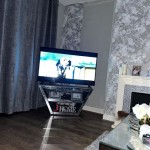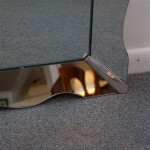How To Hang a Mirror With Double-Sided Tape
Hanging a mirror doesn't always require drills, hammers, and nails. Double-sided tape offers a convenient alternative, particularly for lighter mirrors on smooth, non-porous surfaces. This method is ideal for renters or anyone seeking a damage-free hanging solution. However, careful preparation and the right type of tape are crucial for secure and lasting adhesion.
Choosing the appropriate double-sided tape is paramount for success. Not all tapes are created equal. Look for mounting tape specifically designed for mirrors or heavy objects. This type of tape is generally thicker and features a stronger adhesive than standard double-sided tape. Check the tape's weight capacity to ensure it can adequately support the mirror's weight. Exceeding the weight limit can lead to the mirror falling, potentially causing damage or injury. Consider the environment as well. Some tapes are formulated for specific temperature ranges or humidity levels.
Thorough surface preparation is essential for optimal adhesion. Both the wall and the back of the mirror must be clean and dry. Dust, dirt, and grease can significantly compromise the tape's bonding strength. Use a cleaning solution appropriate for the wall surface, such as isopropyl alcohol, and wipe it down with a lint-free cloth. Allow the surface to dry completely before proceeding. Similarly, clean the back of the mirror where the tape will be applied. Ensure the surface is free of any residue from previous adhesives.
Accurate measurements are critical for proper mirror placement. Decide on the desired location for the mirror and mark the top and bottom edges lightly with a pencil. Use a level to ensure the markings are horizontally aligned. These markings will serve as guides for applying the tape strips. Measuring and marking the wall beforehand eliminates the need for adjustments once the tape is applied, preserving the adhesive's strength.
Applying the double-sided mounting tape requires precision and care. Depending on the size and weight of the mirror, multiple strips of tape may be necessary. Follow the manufacturer's instructions regarding spacing and placement. Generally, applying vertical strips of tape along the back of the mirror, spaced evenly, provides adequate support. Avoid placing tape too close to the edges of the mirror to prevent it from squeezing out when pressed against the wall.
Once the tape is applied to the mirror's back, carefully peel off the protective backing from one side of each strip. Align the top edge of the mirror with the pencil marks on the wall, ensuring it is level. Gently press the mirror against the wall, applying firm, even pressure across its entire surface. Hold the mirror in place for several seconds to allow the adhesive to bond with the wall. The initial bond strength may not be at its maximum immediately, so avoid bumping or disturbing the mirror for a period specified by the tape manufacturer.
For larger or heavier mirrors, consider using additional support during the initial bonding period. Small adhesive tabs or temporary supports placed underneath the mirror can prevent slippage while the tape fully adheres. These supports can be removed once the adhesive reaches its maximum strength, typically within 24-72 hours, depending on the specific tape used. Check the manufacturer's instructions for the recommended curing time.
Removing a mirror mounted with double-sided tape requires careful technique to minimize wall damage. Start by using dental floss or fishing line to slice through the adhesive behind the mirror. Work slowly and carefully from one side to the other. Once the adhesive is severed, gently pry the mirror away from the wall. Residue from the tape can be removed with a commercial adhesive remover or by carefully scraping with a plastic putty knife. Always test any cleaning solution or removal method on an inconspicuous area of the wall first to ensure it does not damage the surface finish.
While double-sided tape provides a convenient and damage-free method for hanging mirrors, it's essential to follow the manufacturer's instructions carefully and consider the weight and size of the mirror. Proper surface preparation and precise application are key to ensuring a secure and long-lasting hold. For extremely heavy or valuable mirrors, or for surfaces with uneven textures, traditional hanging methods using hardware may be more appropriate. Selecting the correct hanging method based on individual circumstances will contribute to a successful and aesthetically pleasing result.

Adhesive Double Sided Mirror Tape Tesa

Adhesive Double Sided Mirror Tape Tesa

Mirror Mounting Tesa

Scotch Fix Mirror Mounting Tape 4496w 1950 P 19mm X 5m 1 Roll Pack 3m United Kingdom

Using Dubble Sided Tape To Hang Up Mirror Tiktok Search

Scotch Fix Mirror Mounting Tape 4496w 1950 P 19mm X 5m 1 Roll Pack 3m United Kingdom

Diy Mirror Hanging Wall Sticker Pasting Full Length 4pcs Tiles Glass Self Adhesive Bathroom Kitchen Bedroom Furniture Home Living Decor Other On Carou

How To Hang A Large Wall Mirror Step By Tutorial

Scotch Mount Indoor Double Sided Mounting Tape 2 54 Cm X 3 17 M 1 Roll Pack 3m

Scotch Fix Mirror Mounting Tape 4496w 1950 P 19mm X 5m 1 Roll Pack 3m United Kingdom








